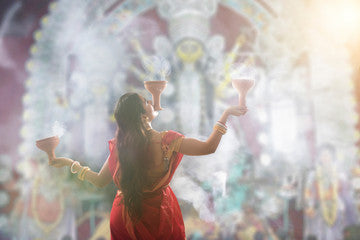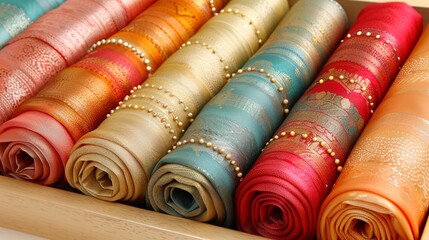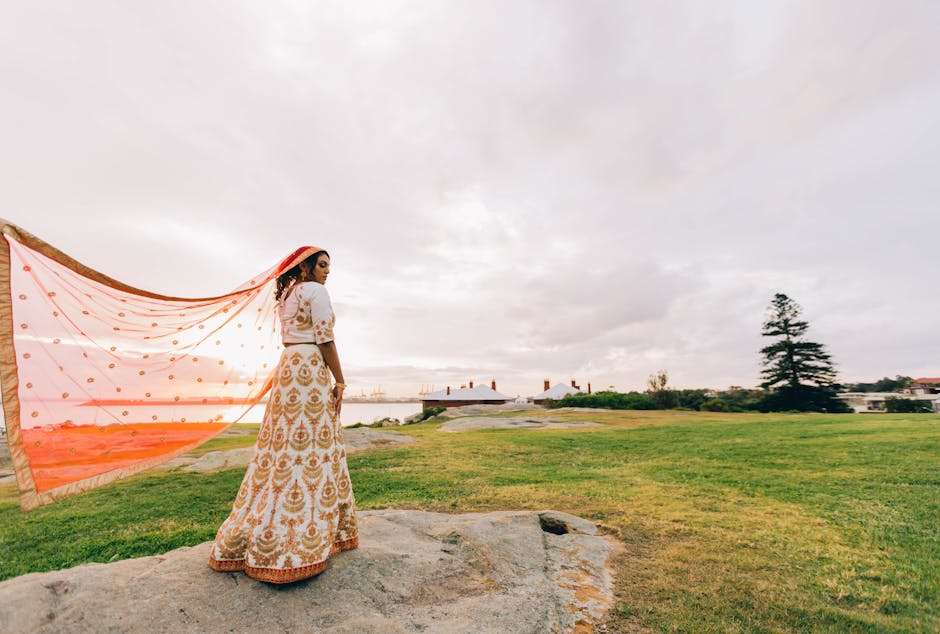From Royal Courts to Runways: The Untold Story of Muslin Silk Sarees
Introduction: Explore the captivating journey of muslin silk sarees
In the constantly changing world of fashion, some fabrics endure the test of time-spinning tales of heritage, craftsmanship, and poise. Among them, the muslin silk saree is unique, not just for its otherworldly beauty but also for the centuries of cultural richness it embodies. Once the preserve of emperors and aristocrats, this fabric, created in the heart of Bengal, has made a stunning comeback to modern fashion.
In 2025, muslin silk sarees are not merely a fashion trend—they are an ode to a heritage that stood the test of colonization, industrialization, and the whims of time. Piloting this style revival is Balaram Saha, a surname that evokes traditional craftsmanship, conservation of local art forms, and unparalleled class in saree design.
The Royal Origin of Muslin Silk
Muslin, a closely woven fabric of cotton, was born in ancient Bengal—Sonargaon and Dhaka—and was famous throughout Asia and Europe as early as the 1st century CE. Roman and Arab merchants carried Bengal muslin to remote empires and sold it as a luxury item cherished by nobles and aristocrats. Historical writings indicate that even Cleopatra of Egypt dressed in muslin clothes imported from the East.
Under the Mughals, muslin was at the height of its glory. The best type, malmal khās, was used by the empire and was so fine that a saree full length could allegedly be passed through a ring. It was so carefully woven that the process involved precision bordering on the extreme—hand-spun under moonlight so the fiber would not break, whence it earned its nickname, woven air.
The transformation into muslin silk—a mixture of this light cotton with lustrous silk fibers—wrote a new page in the history of the fabric. This variation combined the advantages of both worlds: muslin's softness and lightness with silk's beauty and shine. The blend soon became the choice of Mughal queens and zamindari families throughout Bengal.
The Fall and the Glorious Comeback
With British colonization and the introduction of machine-made fabrics, the demand for hand-woven muslin declined. However, in recent decades, the fabric has experienced a stunning resurgence, thanks to informed consumers and heritage labels like Balaram Saha, who have toiled ceaselessly to revive Bengal's weaving heritage. The brand's curators worked closely with master weavers, delving into archival sketches, oral histories, and forgotten weaving charts to recreate authentic muslin silk sarees.
Balaram Saha's muslin silk sarees are an ageless ode to Bengal's handloom heritage. Elegant and verily authentic in their workmanship, these sarees pay homage to tradition even as they imbibe the sensibilities of modern design, giving them a choice recommendation to the fashion-forward lady of 2025.
Why Muslin Silk Sarees Are Taking Over 2025 Fashion Trends
1. Eco-Friendly Fashion
Muslin silk sarees fit the bill for 2025's number one trend: sustainable ethnic wear. With a low environmental footprint and durable quality, they're the epitome of eco-chic fashion.
2. Modern Minimalism with Heritage Charm
Today's designers are testing pastel hues, metallic yarns, and unexpected blouse silhouettes—but never losing the essence of classic weaves. Balaram Saha perfectly melds these aspects, presenting collections that are both grounded and groundbreaking.
3. Celebrity Endorsements & Runway Presence
From red carpets to fashion weeks, muslin silk sarees have gained popularity among influencers and celebrities, with Balaram Saha designs gracing editorials and influencer feeds for their subtle sophistication and elegant craftsmanship.
Balaram Saha: The Heritage Behind the Appearance
For more than a century, Balaram Saha has been a guardian of Bengal's textile heritage. The brand has not only retained techniques but also community traditions, working with more than 500+ weaving families in West Bengal and Bangladesh.
Each muslin silk saree by Balaram Saha takes a three-month journey, involving:
-
Hand-spinning cotton yarn on vintage charkhas
-
Plant-based pigment dyeing
-
Weaving on family heirloom pit looms
Even the motifs have stories to tell—lotuses for purity, fish for abundance, and vines for prosperity. These are not merely designs—they are coded messages from a culture that communicated in thread and color.
In 2025, Balaram Saha is still not only a brand, but a movement—raising artisan livelihoods, redefining heritage fashion, and preserving the magic of muslin silk for generations to come.
Styling Hints: How to Style Your Muslin Silk Saree in 2025
-
New Blouse Game: Match with off-shoulder or high-neck embroidered blouses for a runway look.
-
Saree Belts & Drapes: Top with a simple belt and try pre-stitched pleats for an Indo-Western feel.
-
Jewelry Mood: Opt for light pearl drops or dramatic with oxidized silver—muslin silk can pull off both moods with ease.
Conclusion: Woven Legacies, Worn with Pride
The course of muslin silk sarees is not simply the history of a fabric—it's the progress of a saga of civilizations. From the humble loom huts of medieval Bengal to the splendor of Mughal courts, from the ruinous waves of colonialism to the radiant runways of international fashion, muslin silk has marched through centuries both as a survivor and an emblem.
What is so remarkable about this textile is not so much its feel or its beauty, but that it can carry an entire cultural identity. It is a history inscribed in warp and weft—of vanished empires, master craftsmen, abandoned looms, and now, a strong renaissance fueled by intent and fervor.
In this age and time, where mass production has come to be the default at the expense of thoughtful craftsmanship, the resurgence of muslin silk sarees is a victory for tradition over trend. It reaffirms that slow fashion, cultural resilience, and artisanal skill are not temporary fads—these are requirements in upholding our collective human heritage.
Steering the resurgent ship of muslin silk sarees is Balaram Saha, not as a label but as an icon. More than a century of devotion to hand-woven heritage has taken Balaram Saha beyond the realms of commerce into becoming a keeper of Bengal's essence. Each saree that is taken out of their atelier is a perpetuation of heritage, proof of the spinners' patience, the weaver's exactitude, and generations of people's pride for not allowing their tradition to whisper into oblivion.
In 2025 and later, donning a muslin silk saree is no longer a matter of aesthetics—it's a statement of culture. It's an ode to remembrance, a respectful nod to the hands that crafted it, and a reminder that beauty is evergreen when it is a product of truth.
So whether you’re a bride marking a sacred milestone, a connoisseur curating a heritage wardrobe, or a modern woman redefining tradition on your own terms, a muslin silk saree from Balaram Saha is more than attire—it’s a woven memory, an heirloom of honor, and a garment with a soul.
Let us not just wear these sarees, but respect them, save them, and pass them on. Because in every thread there is a tale, and in every tale, the spirit of Bengal lives on.





